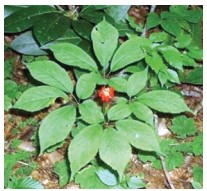Ritchie C. Vaughan, Graduate Research Assistant, Forest Resources and Environmental Conservation, Virginia Tech, James L. Chamberlain, Research Forest Products Technologist, National Agroforestry Center, USDA Forest Service, John F. Munsell, Assistant Professor and Forest Management Extension Specialist, Forest Resources and Environmental Conservation, Virginia Tech
Introduction
Farming alternative crops, like American ginseng, is becoming more popular among forestland owners. Ginseng is a native medicinal herb and can be deliberately cultivated under a forest canopy. In recent surveys, over 40 percent of landowners in the Southeastern United States indicated a desire for more information on forest farming (Workman et al. 2003), and over half of the Extension agents and almost 30 percent of foresters in the Mid-Atlantic states have been queried by landowners about ginseng income opportunities (Kays 2004). Extension agents and foresters are the first point of contact for many landowners seeking alternative income opportunities through forest farming of ginseng and other medicinal plants. Kays (2004) found that over 40 percent of foresters and Extension agents in the Mid-Atlantic want more information on ginseng to help these landowners. This article provides Extension agents, foresters and landowners with information on ginseng and how it can be profitably farmed in the
forest.

